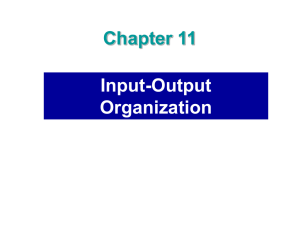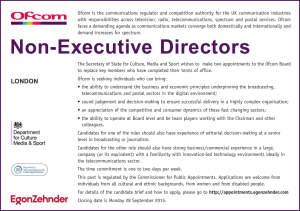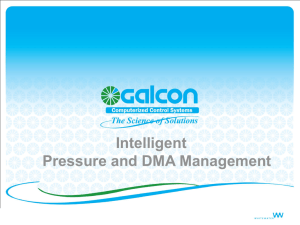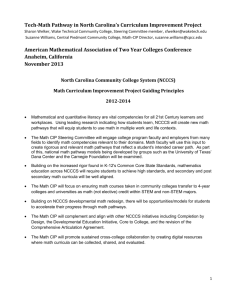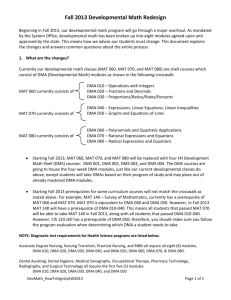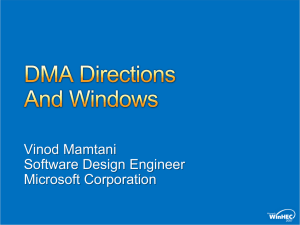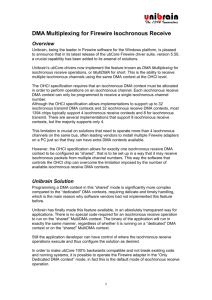Dear Sirs, Response From the Direct Marketing
advertisement
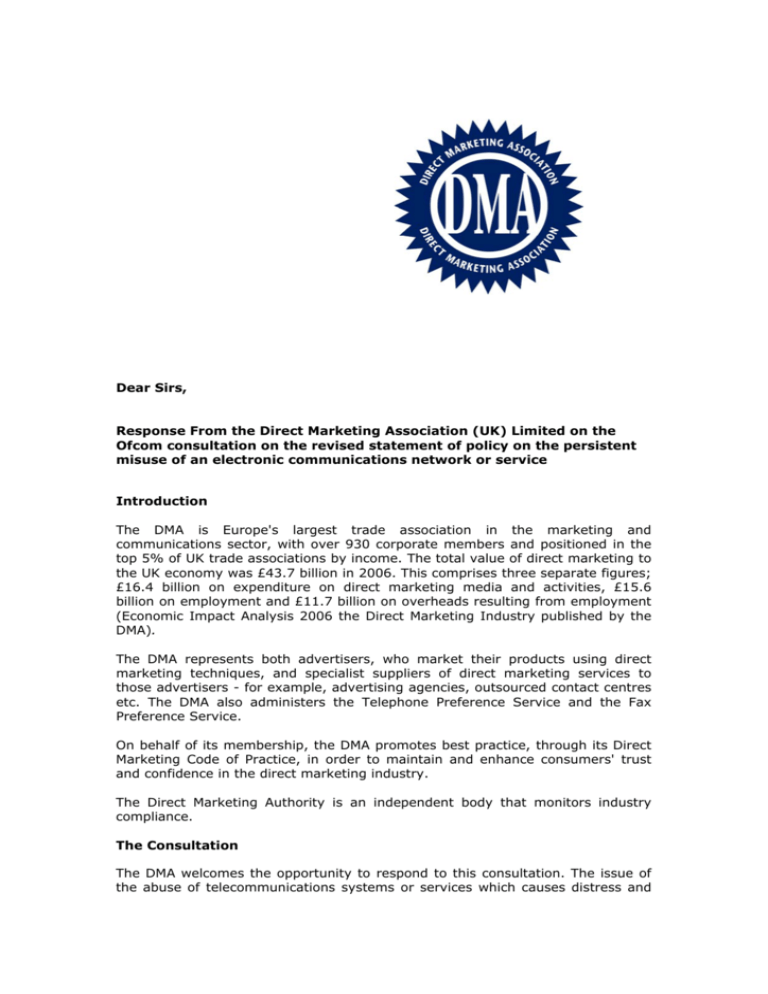
Dear Sirs, Response From the Direct Marketing Association (UK) Limited on the Ofcom consultation on the revised statement of policy on the persistent misuse of an electronic communications network or service Introduction The DMA is Europe's largest trade association in the marketing and communications sector, with over 930 corporate members and positioned in the top 5% of UK trade associations by income. The total value of direct marketing to the UK economy was £43.7 billion in 2006. This comprises three separate figures; £16.4 billion on expenditure on direct marketing media and activities, £15.6 billion on employment and £11.7 billion on overheads resulting from employment (Economic Impact Analysis 2006 the Direct Marketing Industry published by the DMA). The DMA represents both advertisers, who market their products using direct marketing techniques, and specialist suppliers of direct marketing services to those advertisers - for example, advertising agencies, outsourced contact centres etc. The DMA also administers the Telephone Preference Service and the Fax Preference Service. On behalf of its membership, the DMA promotes best practice, through its Direct Marketing Code of Practice, in order to maintain and enhance consumers' trust and confidence in the direct marketing industry. The Direct Marketing Authority is an independent body that monitors industry compliance. The Consultation The DMA welcomes the opportunity to respond to this consultation. The issue of the abuse of telecommunications systems or services which causes distress and harassment to consumers is of paramount importance to the DMA and its members. Consultation Questions Q1. Do you agree that the proposed changes make for a clearer set of rules that enable compliance to be achieved with a greater degree of certainty? The majority of the proposed changes are welcomed by the DMA in order to clarify the advice in the original 2006 statement of policy. However, there is concern regarding some areas: 1.21.1.The formula for calculating the abandoned call rate is unclear, in particular ‘calls passed to a live operator’. ‘Live calls’ are interpreted by the DMA and Ofcom to mean ‘calls where a live individual answers a call made by the dialling equipment’. However, ‘calls passed to a live operator’ when not using AMD can also include calls answered by an answer machine which can not be described as a ‘live call’. The formula therefore needs to be amended to: Abandoned calls/(live calls passed to an agent + abandoned calls)*100 1.21.2. There was concern raised by some DMA members about the decision to count ‘false positives’, where a caller using AMD hangs up on a live individual because it mistakenly believes they are speaking to an answer machine, as an abandoned call and include them within the 3% ‘allowable’ abandoned calls. The difficulty lies in assessing the accuracy of AMD which will vary depending on the equipment used, the type of list being dialled, the network in use and the time of day. The suggestion therefore by Ofcom of a generic figure to be used by everyone does have appeal. However the figure given by Ofcom of 20% (1 in 5), does seem wide of the mark. If this proposal is to be adopted, independent testing using different AMD systems and a variety of different lists will be necessary to arrive at a reasonable figure that industry could find acceptable. 1.22.2. The issue concerning the 2 second timeframe, in that a brief recorded information message is played within 2 seconds of the call being answered where the 2 seconds starts when the individual starts their greeting, has also led to some concern. The manufacturers of AMD systems are reluctant to share details of their operation but one common area that is accepted is the measurement of the length of the greeting. When answering the phone, an individual will not expect to be interrupted during their greeting and therefore the issue of silence, something the rules are designed to prevent, will not be of relevance until the greeting is finished. The length of an individual’s greeting can not be predicted but on the whole is shorter than that provided by an answer machine or a voicemail system. The requirement for AMD equipment to complete their detection of an answer machine may increase the likelihood of false positives. An alternative could be to state that in the event of an abandoned call, no one should be subjected to more than 2 seconds of silence before being played an information message. Q2. Do you agree with Ofcom’s approach to determining whether the use of automated messages constitutes misuse? The DMA would agree that there is the scope for misuse when using automated calling systems which can cause fear and anxiety to consumers. The criteria suggested and the examples given by Ofcom provide a basis to look at specific incidents but it should always be remembered that how an individual might react to such calls will vary and can not be anticipated. Any method for determining whether automated messages constitute abuse should therefore have a degree of flexibility not only in judging but also in the penalties imposed should the situation amount to misuse. Q3. Do you believe that it is possible to define objective criteria for applying the public interest test? The DMA would agree that there is the possibility of having a set of objective criteria against which the issue of whether or not an automated message is ‘in the public interest’ could be assessed. Each criteria would have to include both positive and negative factors which would cover the questions of consumer detriment and issues of privacy. Q4. Do you believe that outbound call steering should only be used with customers who have given their prior consent? The DMA are of the view that, subject to any objective criteria established to assess the ‘public interest’ in such calls, all outbound steering calls should be made only with the express consent of the recipient. This is the best way to ensure consumers feel confident in the use of such technology and reduce the likelihood of consumer mistrust of automated call systems in general. Q5. Do you agree with Ofcom’s clarification that the exploitation of all types of revenue-sharing numbers represents a form of misuse? The DMA would agree that using revenue-sharing telephone numbers can constitute abuse where the consumer is not informed regarding the cost of those calls. Conclusion The DMA acknowledges the dangers that can be caused by the reckless use of automated call systems and the effect this can have not only on consumers but on direct marketing itself. It is not in the interests of the telemarketing industry to allow misuse of the technology available to them. The DMA, therefore, have as part of their Code of Practice, which all members must adhere to, a section relating to the use of such systems. All DMA members are advised of their responsibilities both under the law and under the Code of Practice, which often goes beyond what is required by law. Any member breaching those requirements will be subject to action by the Direct Marketing Authority. The DMA would be willing to assist Ofcom in developing a clear policy statement which balances the interest of consumers with that of legitimate business. Yours faithfully, Janine Paterson (Mrs) Solicitor Legal & Public Affairs Advisor Direct Marketing Association 1 February 2008

